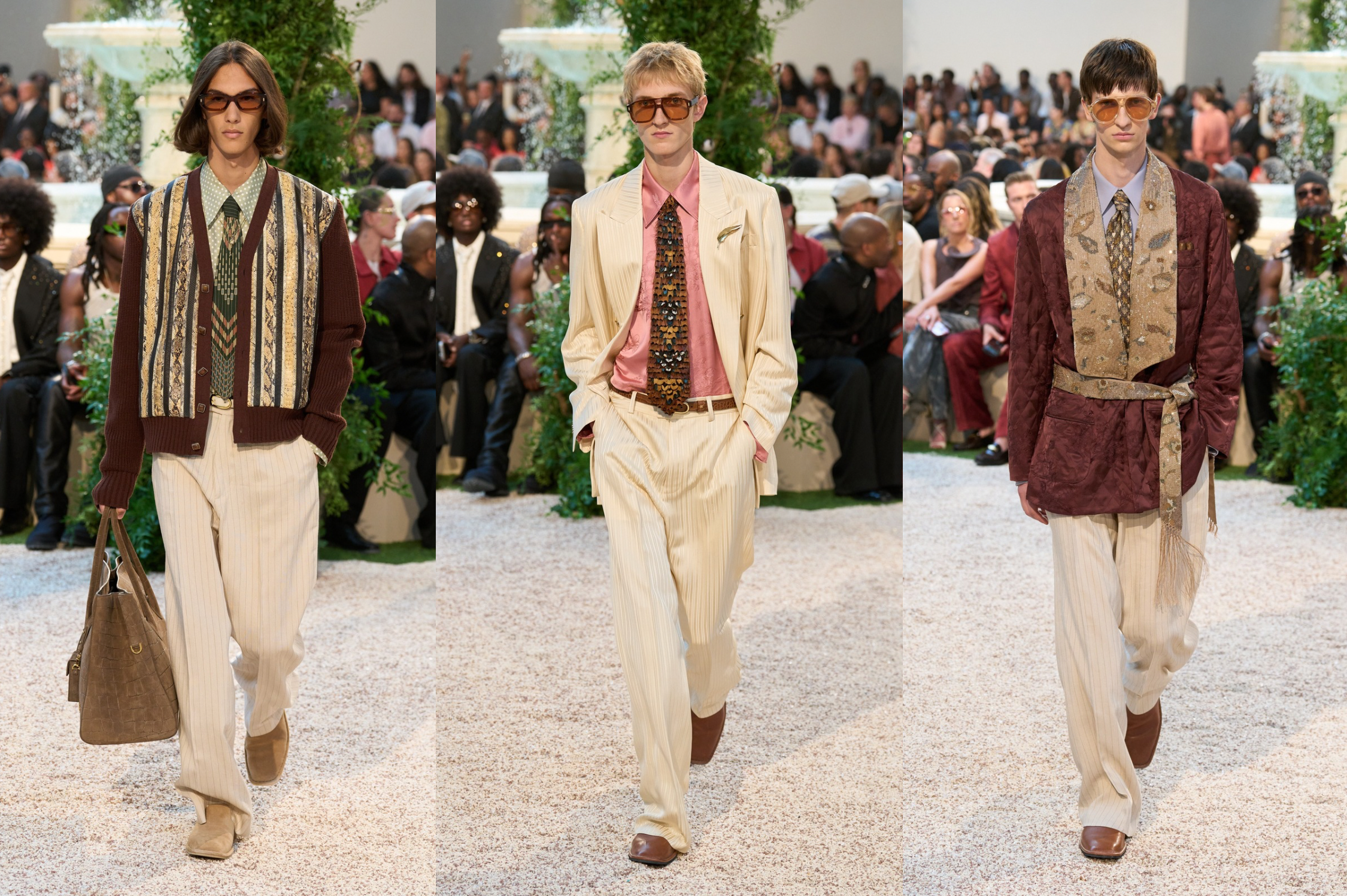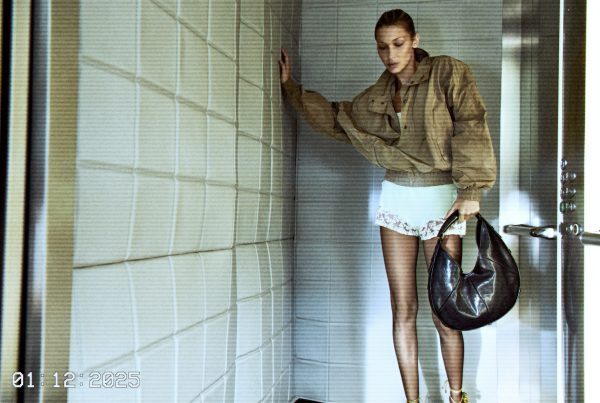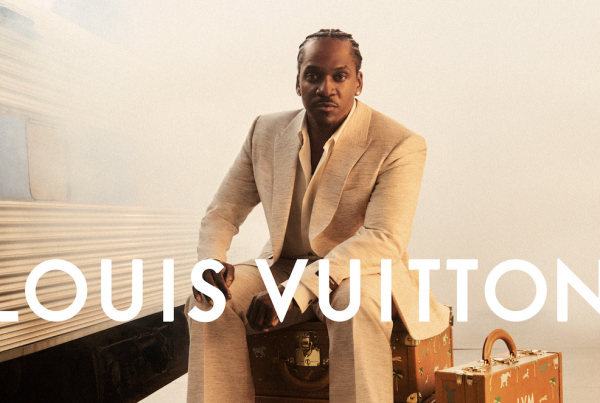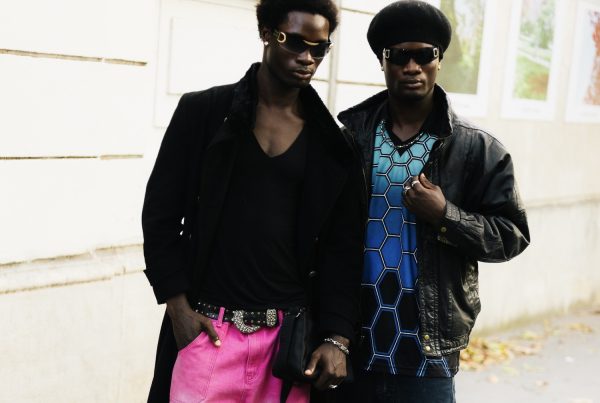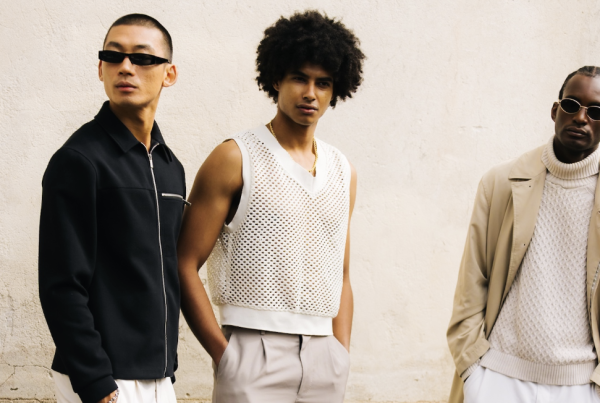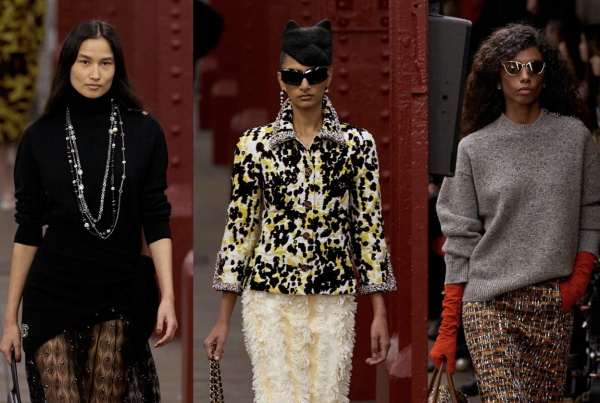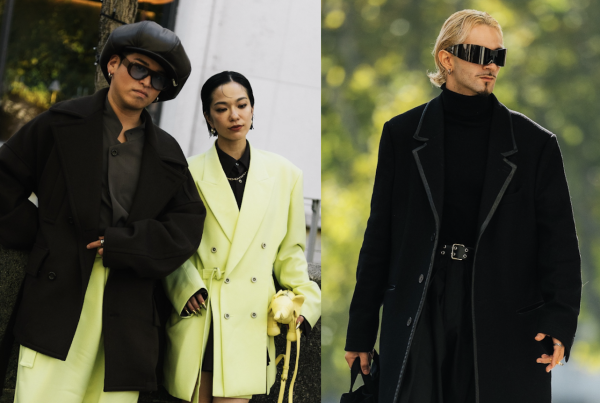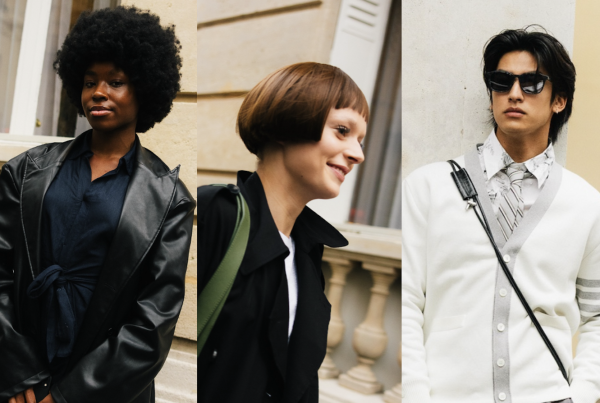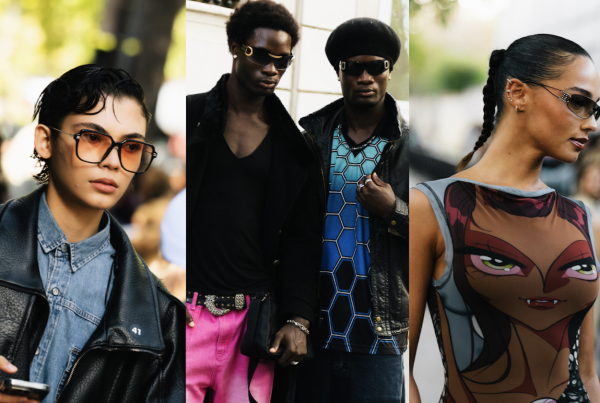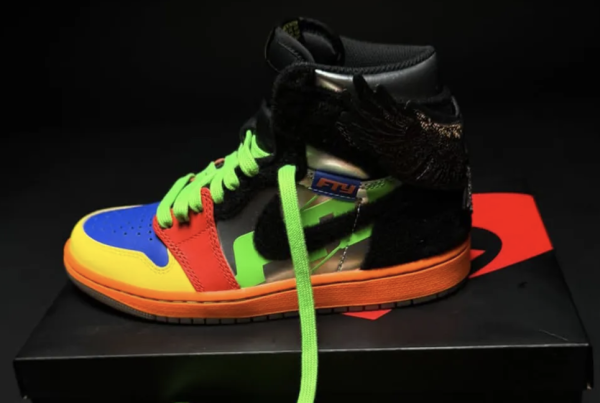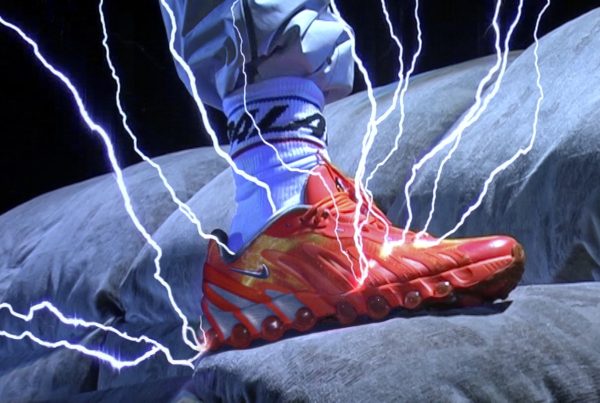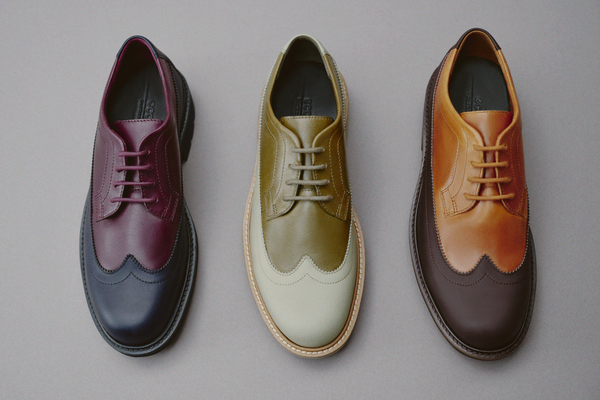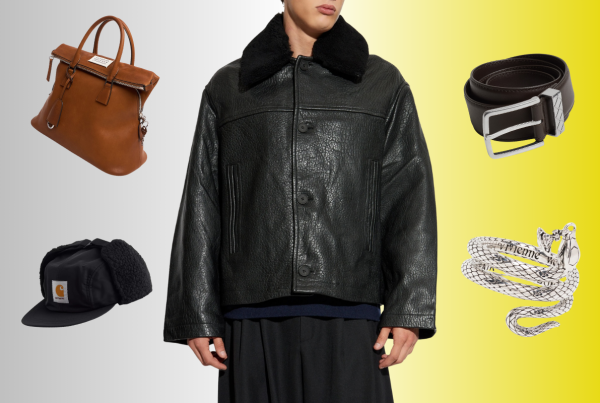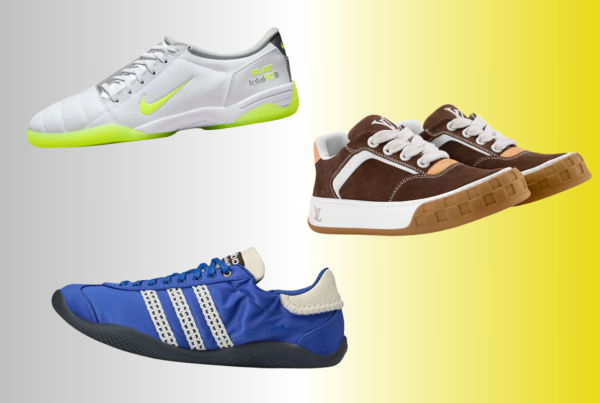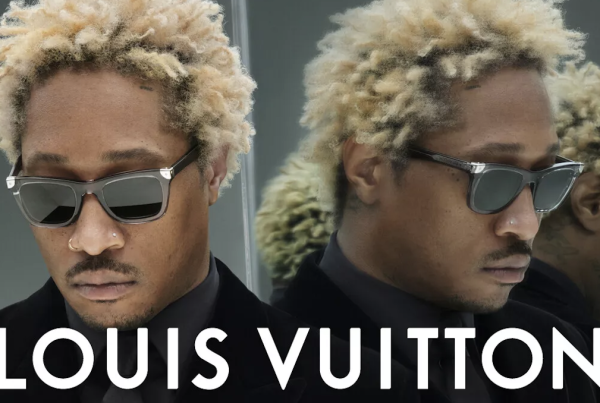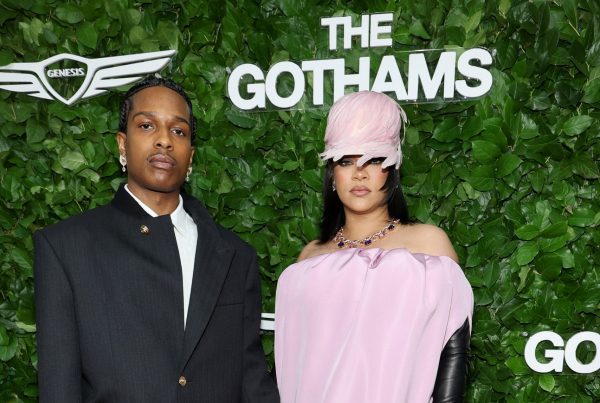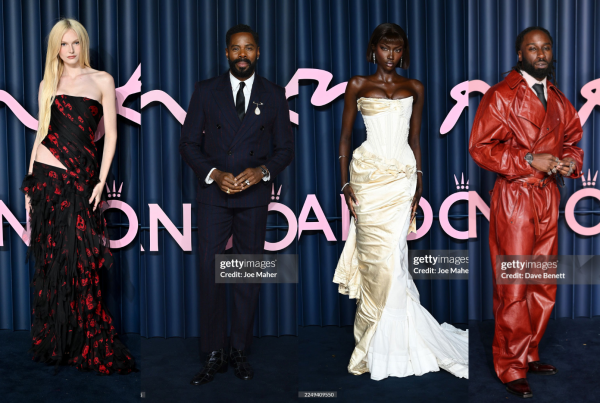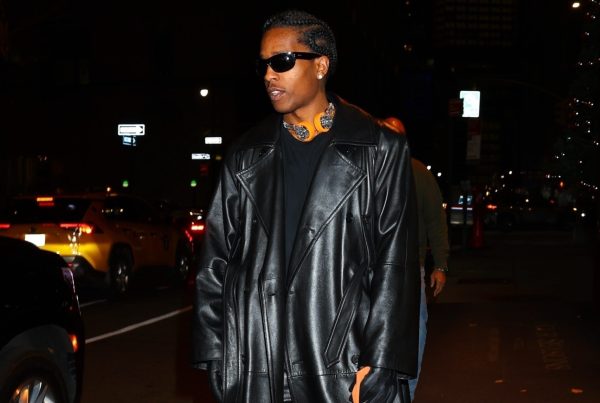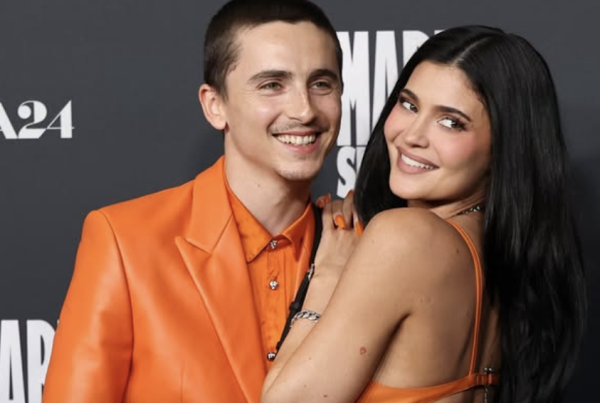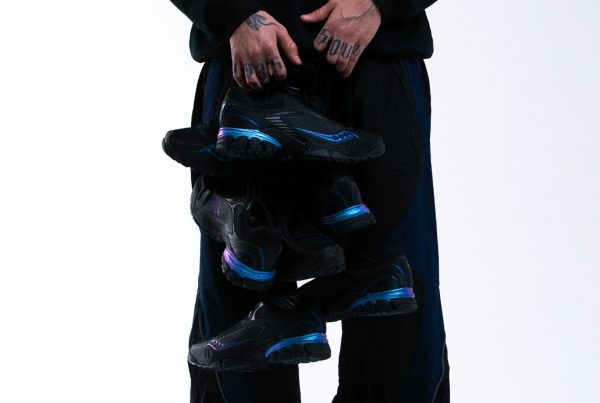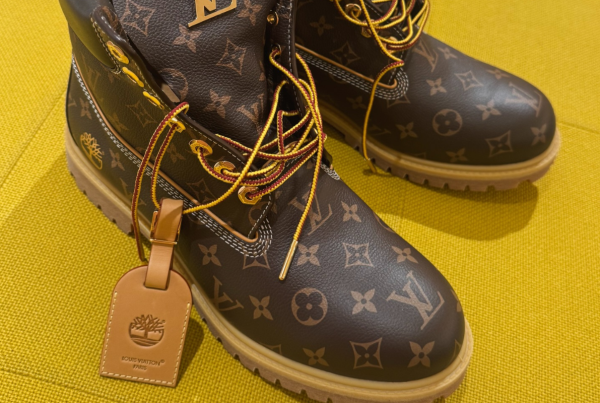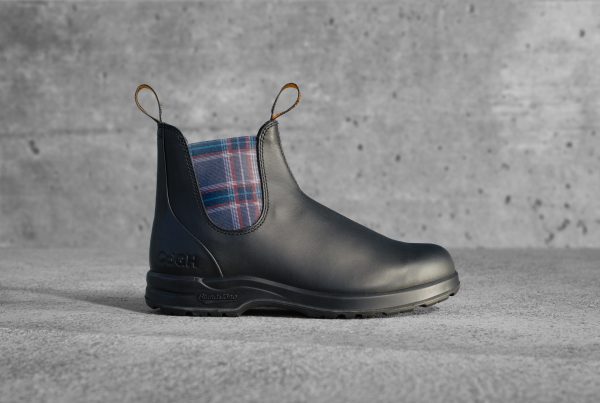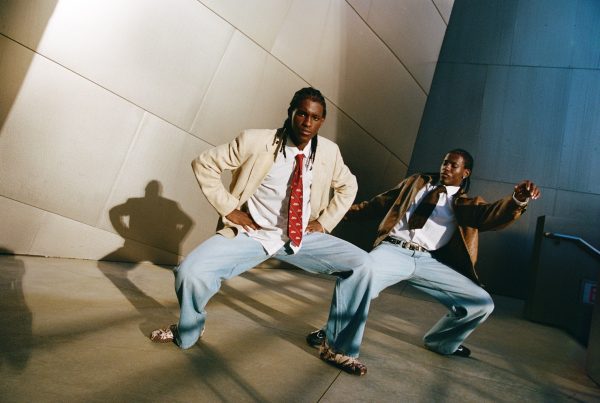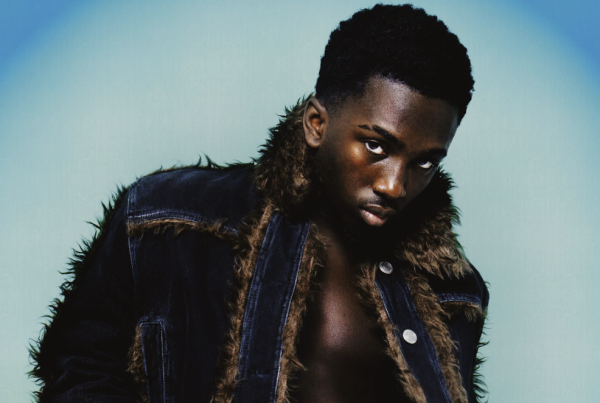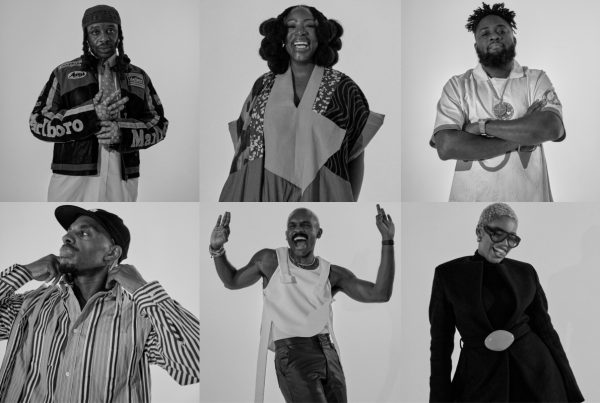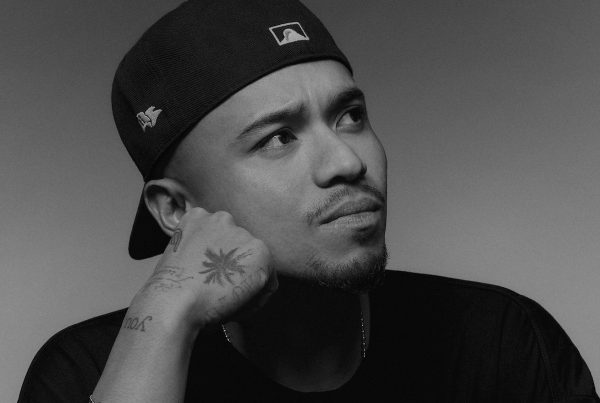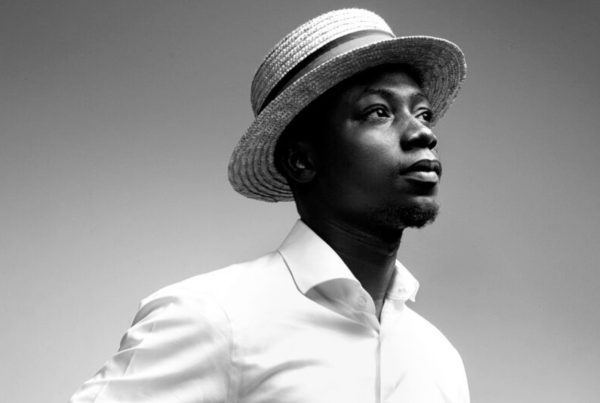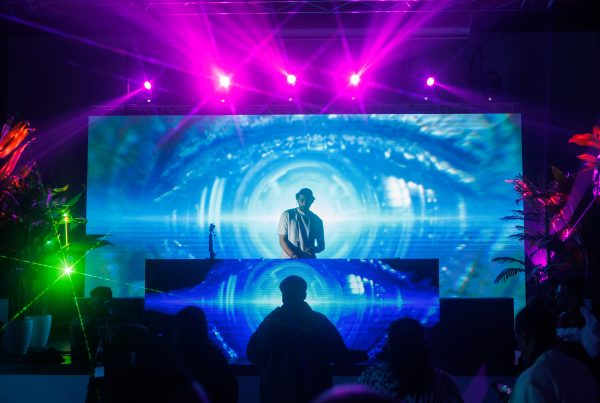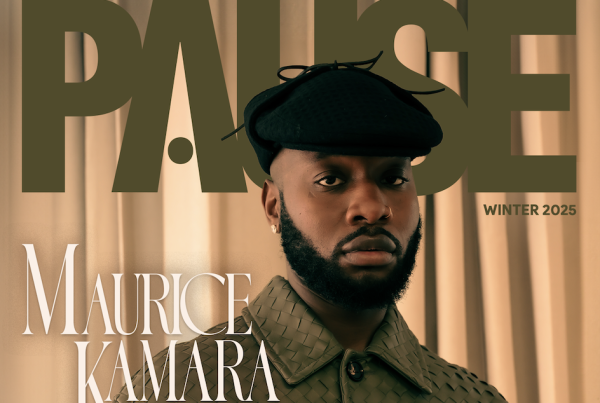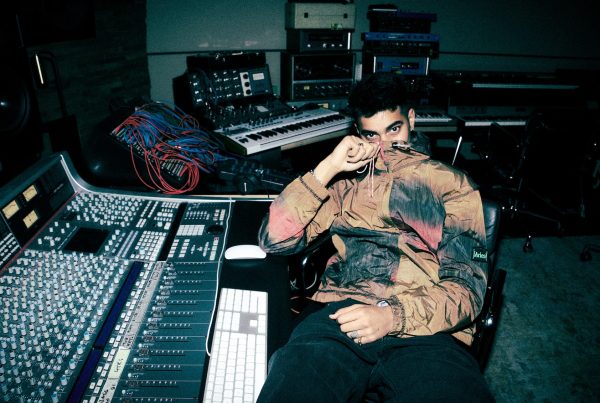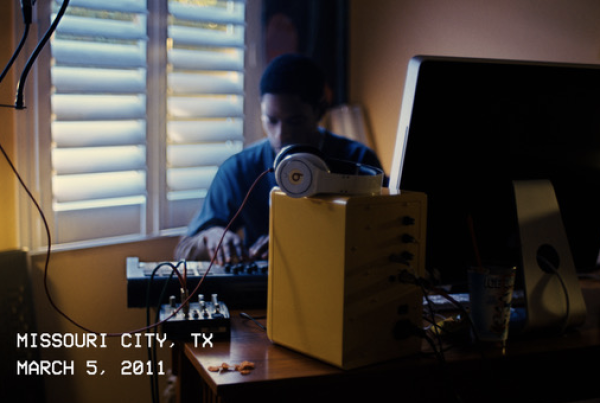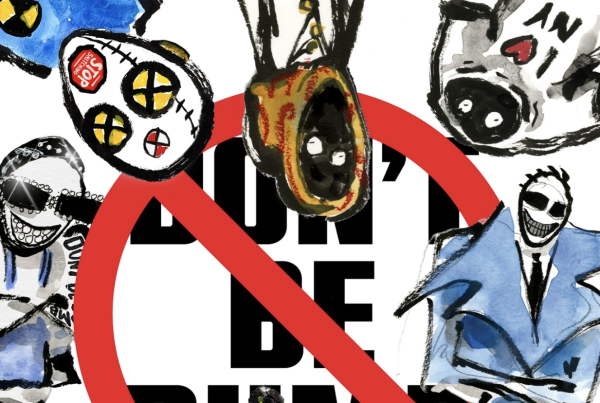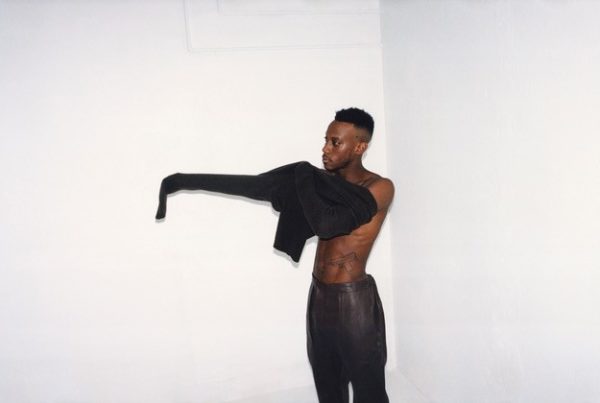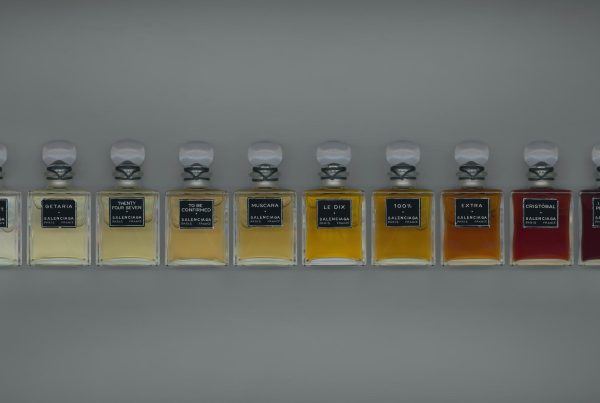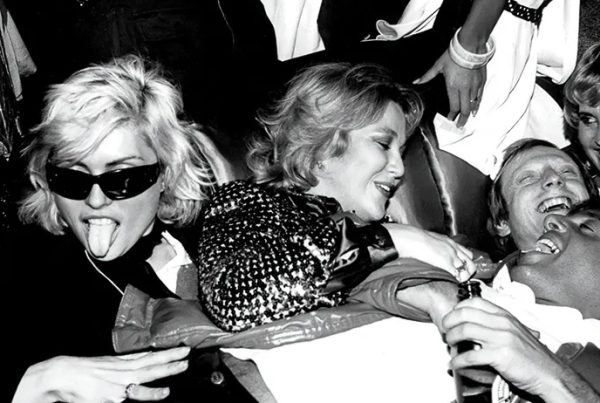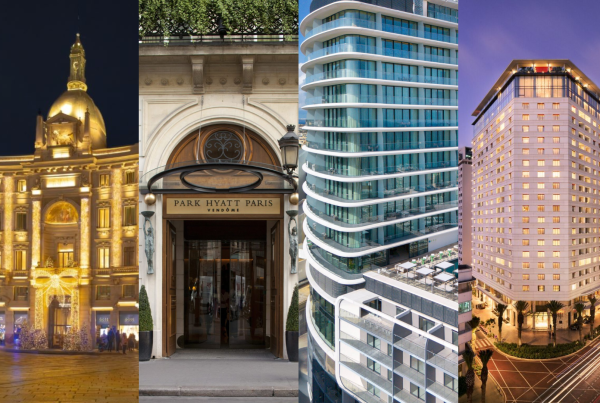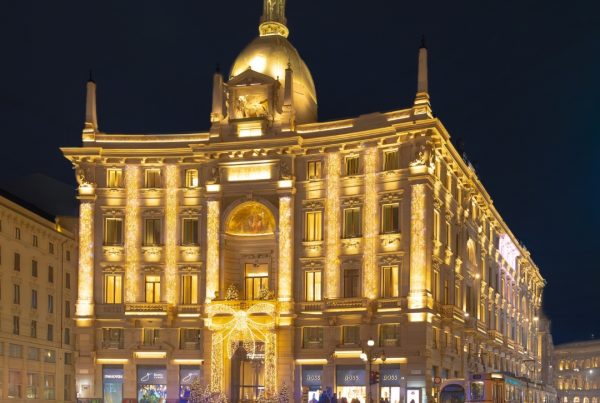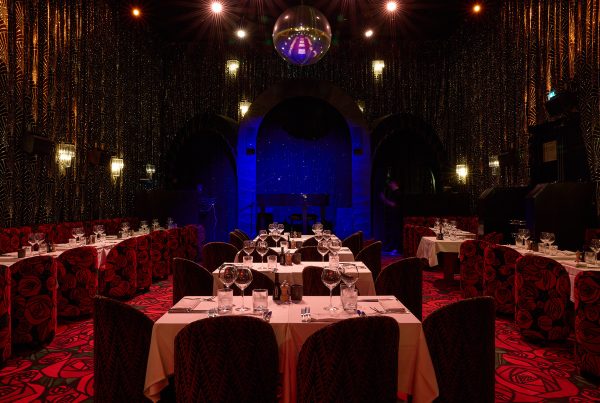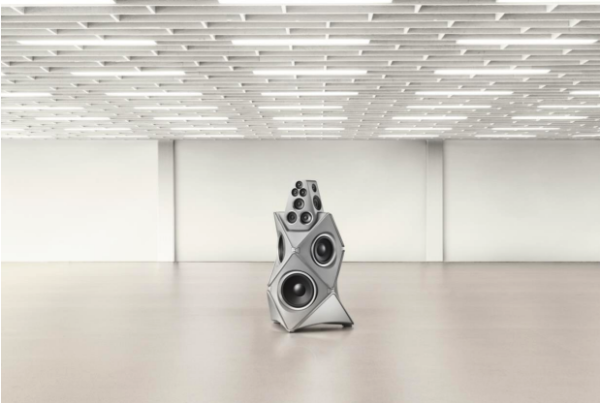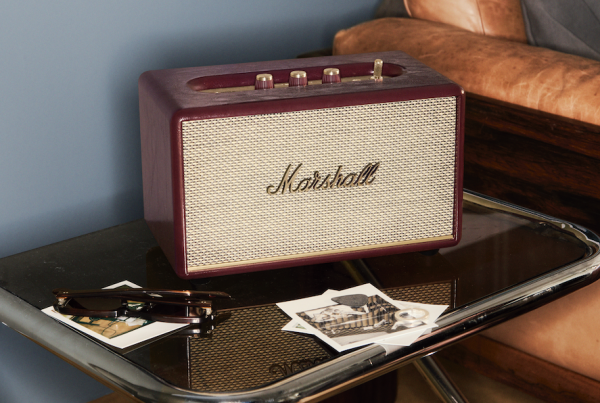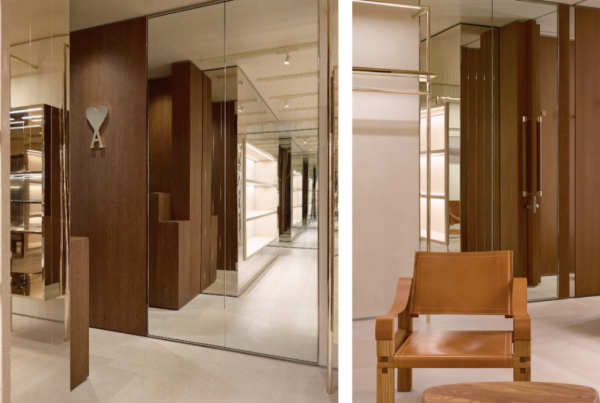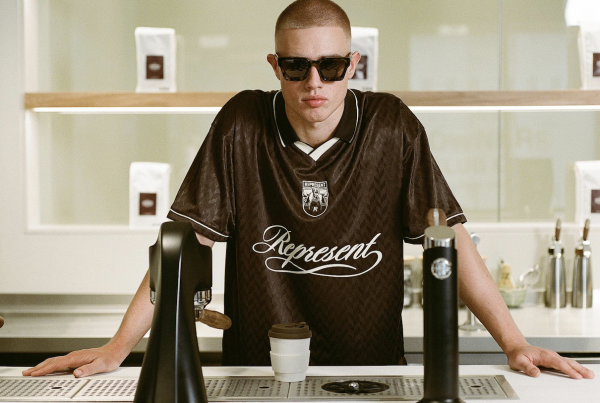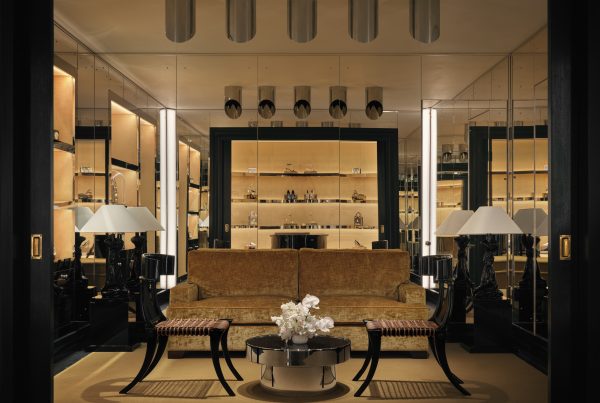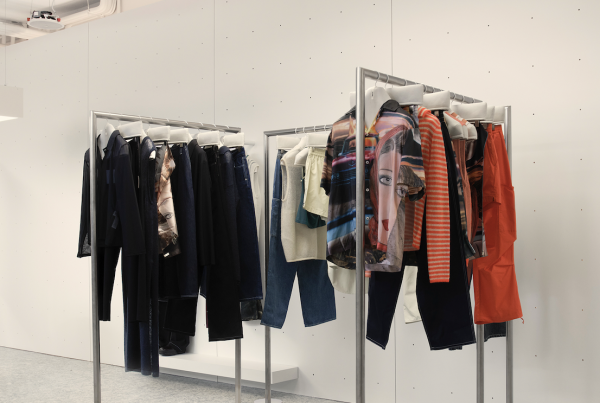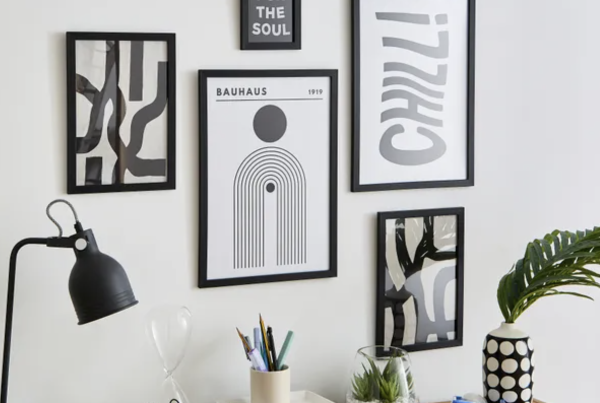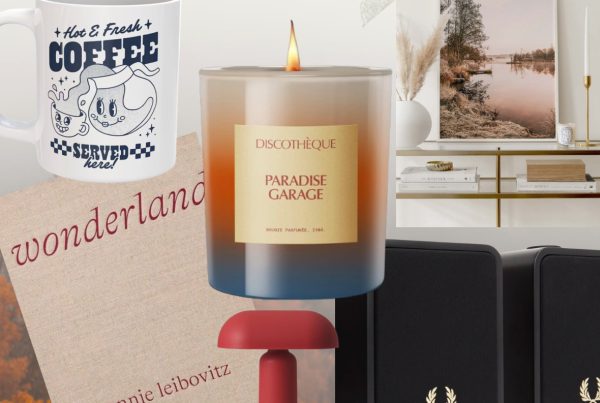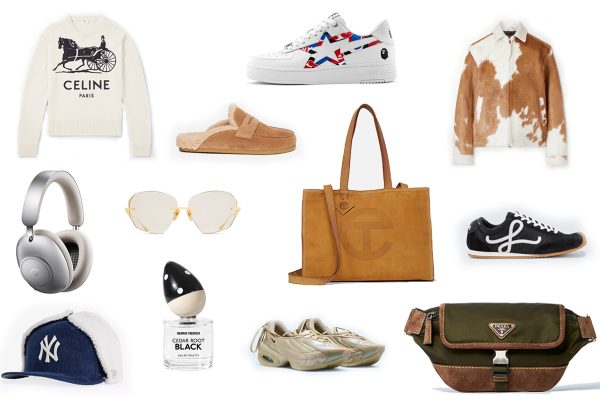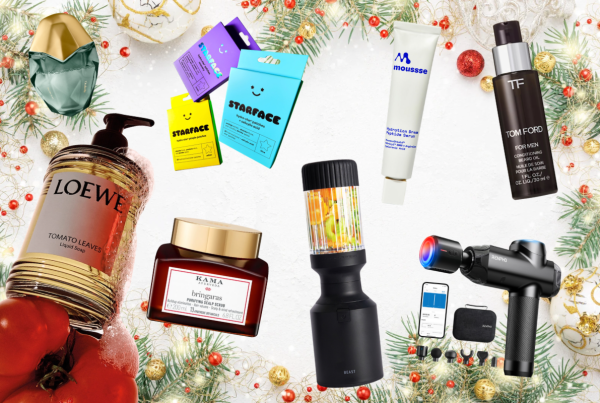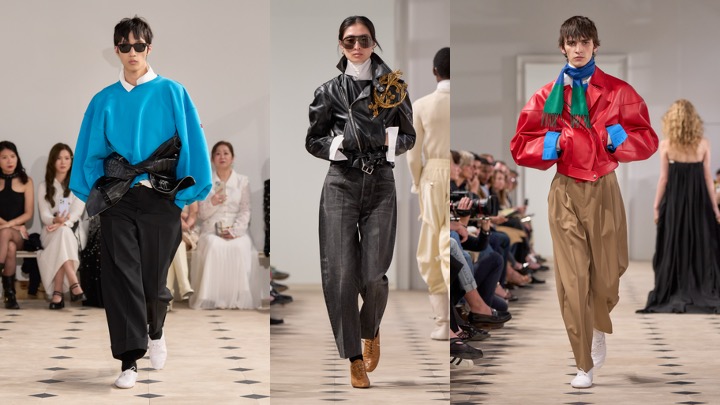The Best Moments from the Week.
Paris Fashion Week Men’s Spring/Summer 2026 offered a compelling glimpse into contemporary menswear, showcasing a departure from traditional norms to redefine everyday dressing. From A$AP Rocky’s courtroom-inspired sophomore collection to Acne Studios and Juun.J highlighting the beauty of imperfection, the week was filled with memorable moments.
Feng Chen Wang’s Spring Florals
As Feng Chen Wang celebrated its tenth anniversary, the Spring/Summer 2026 collection, titled “A Future in Bloom,” unfolded as a deeply personal and poignant homage to nature, meticulous craftsmanship, and evolving identity. The show, marked a significant turning point for the brand, balancing a profound respect for its foundational principles with a spirit of experimentation.
Wang continued to champion her signature botanical dyeing technique, pressing fresh leaves onto handwoven cotton with high heat. This laborious process creates unique, ethereal imprints of flora, ensuring no two pieces are alike. Raw, untrimmed fabric edges were embraced, celebrating imperfection and echoing wabi-sabi. The natural colour palette of warm beige, bamboo green, and soft pink evoked stability and rebirth.
Wang’s signature tailoring evolved this season, with a focus on lightness and movement, utilising softer materials and structured pleats for unconstrained precision. The collection also debuted plaid, not as a flat pattern, but as a sculpted material forming architectural, three-dimensional silhouettes with sharp edges. Knitwear challenged traditional comfort, employing unconventional weaving techniques to create tactile, resistant surfaces.
The brand underscored its community dedication by featuring NBA star Russell Westbrook – along time supporter and friend of Wang’s and a diverse cast, with half the models sourced from open calls, reinforcing a commitment to inclusivity.
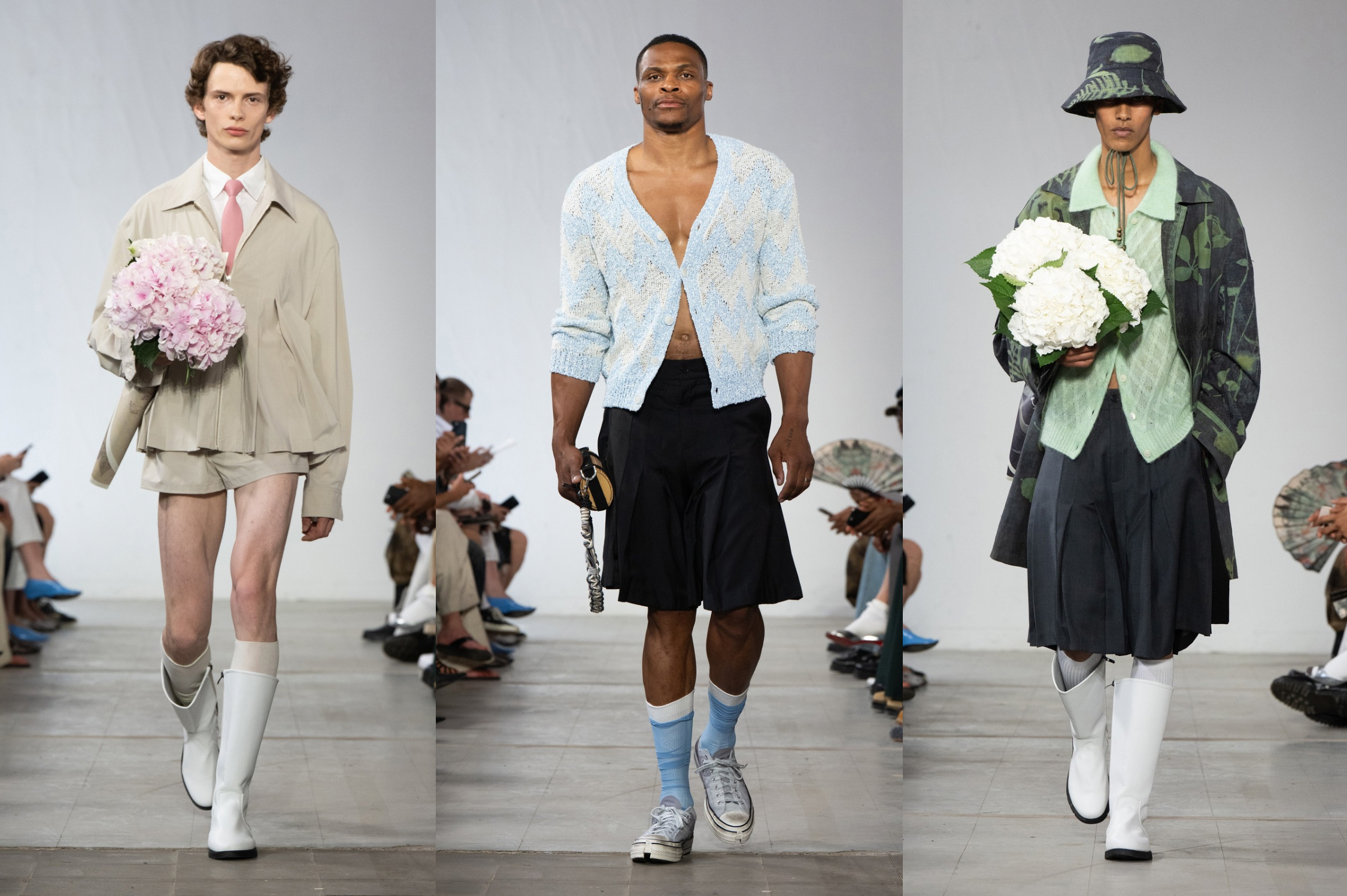
A Dior Debut to Remember
Jonathan Anderson’s highly anticipated debut as the singular creative director for Dior’s men’s, women’s, and haute couture lines officially began with his Spring/Summer 2026 menswear collection for the brand. The collection was a fascinating blend of historical reverence and contemporary subversion, signalling a bold new chapter for the brand.
Anderson’s vision for Dior was a subtle yet significant re-evaluation of the house’s branding, refining the iconic block letter logo. The collection itself was an intelligent deconstruction of traditional formality, taking historical menswear tropes – from 18th and 19th-century French court dressing to aristocratic British influences – and infusing them with a youthful, undone sensibility.
Key pieces showcased this dynamic tension. The iconic Bar Jacket, a cornerstone of Dior’s legacy, was reimagined in an Irish Donegal tweed, a subtle nod to Anderson’s own heritage, and often styled with an unexpected ease. Ties were worn backward or loosely draped, defying conventional neatness. Cape-like overcoats were paired with short trousers and sporty tube socks, while tuxedo shirts and waistcoats found new life alongside denim and silk evening scarves. Even classic cargo shorts were given a dramatic, voluminous silhouette, recalling Christian Dior’s own archival designs.
Accessories were equally impactful. The Dior Book Tote gained a masculine edge, emblazoned with classic book covers like ‘Les Fleurs du Mal’. Playful, nature-inspired jewellery (sunflowers, four-leaf clovers, ladybugs) added a whimsical touch, while footwear spanned from smart pastel knits to CD loafers, logo slippers, and elegant sandals, blending market appeal with high fashion.
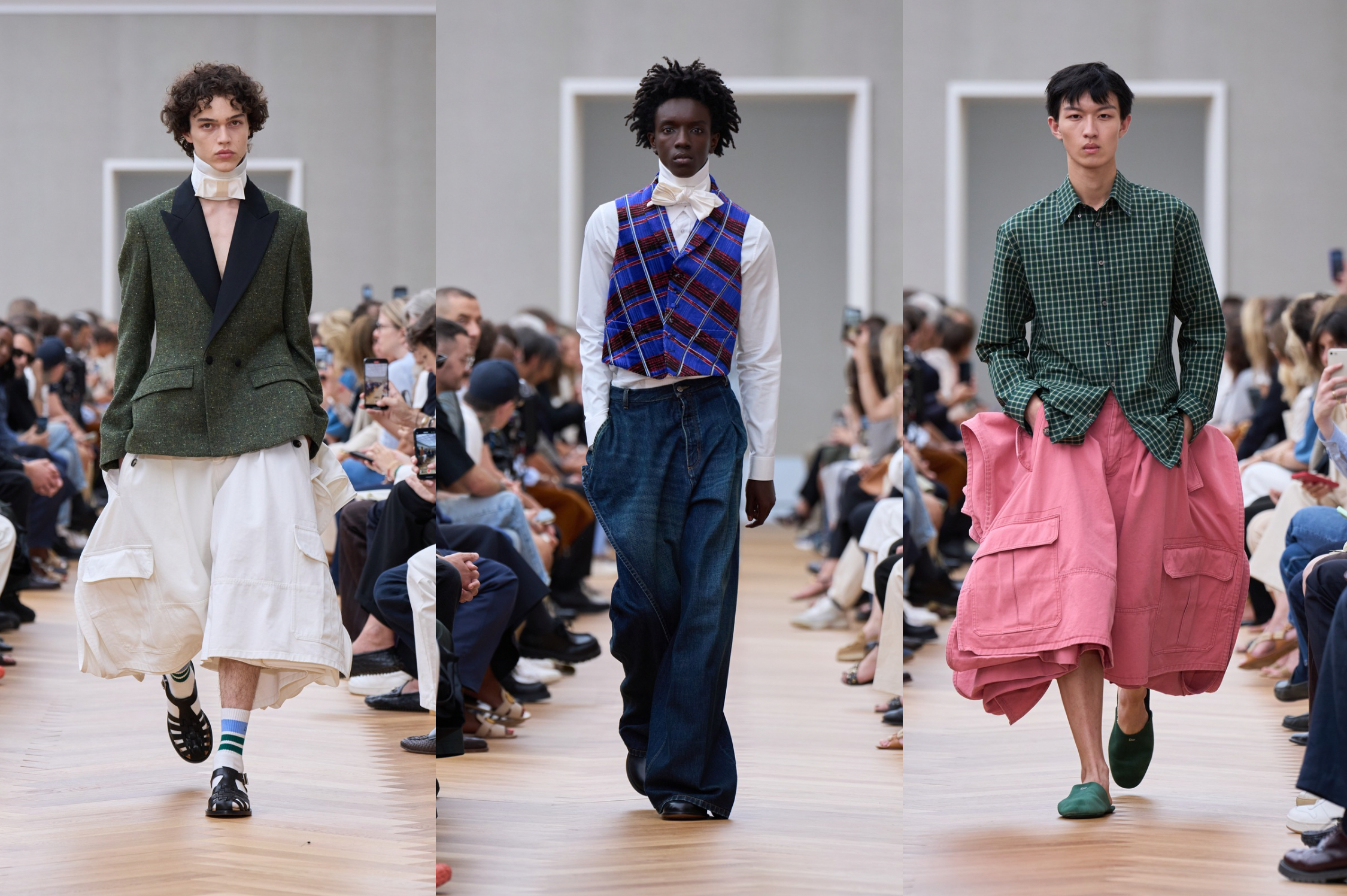
Juun.J ‘Boy-ish’ Collection
Juun.J’s Spring/Summer 2026 collection, aptly titled “BOY-ISH,” unveiled at the Palais de Tokyo, explored the captivating beauty found in youthful sartorial experiments and what might initially be perceived as “mistakes.” Creative Director Jung Wook-jun masterfully reinterpreted the awkward yet endearing styling choices of young people into a series of highly precise, structured, and inherently dynamic looks.
The collection was a study in contrasts, a hallmark of Juun.J’s design philosophy. Raw denim was boldly paired with formal suiting, exaggerated volumes met sharply tailored lines, and oversized tops were balanced by fitted trousers. The tension created through these deliberate juxtapositions of shape and scale defined the collection’s unique rhythm. Each silhouette, while controlled and intentional, carried an unpredictable energy, reflecting Jung’s fascination with outfits that feel “wrong” yet somehow work with unexpected clarity.
Fabric choices emphasised the collection’s structure: wool suiting for sharp forms, denim and leather for weight and edge, and cotton blends for softness, each material retaining its distinct texture.
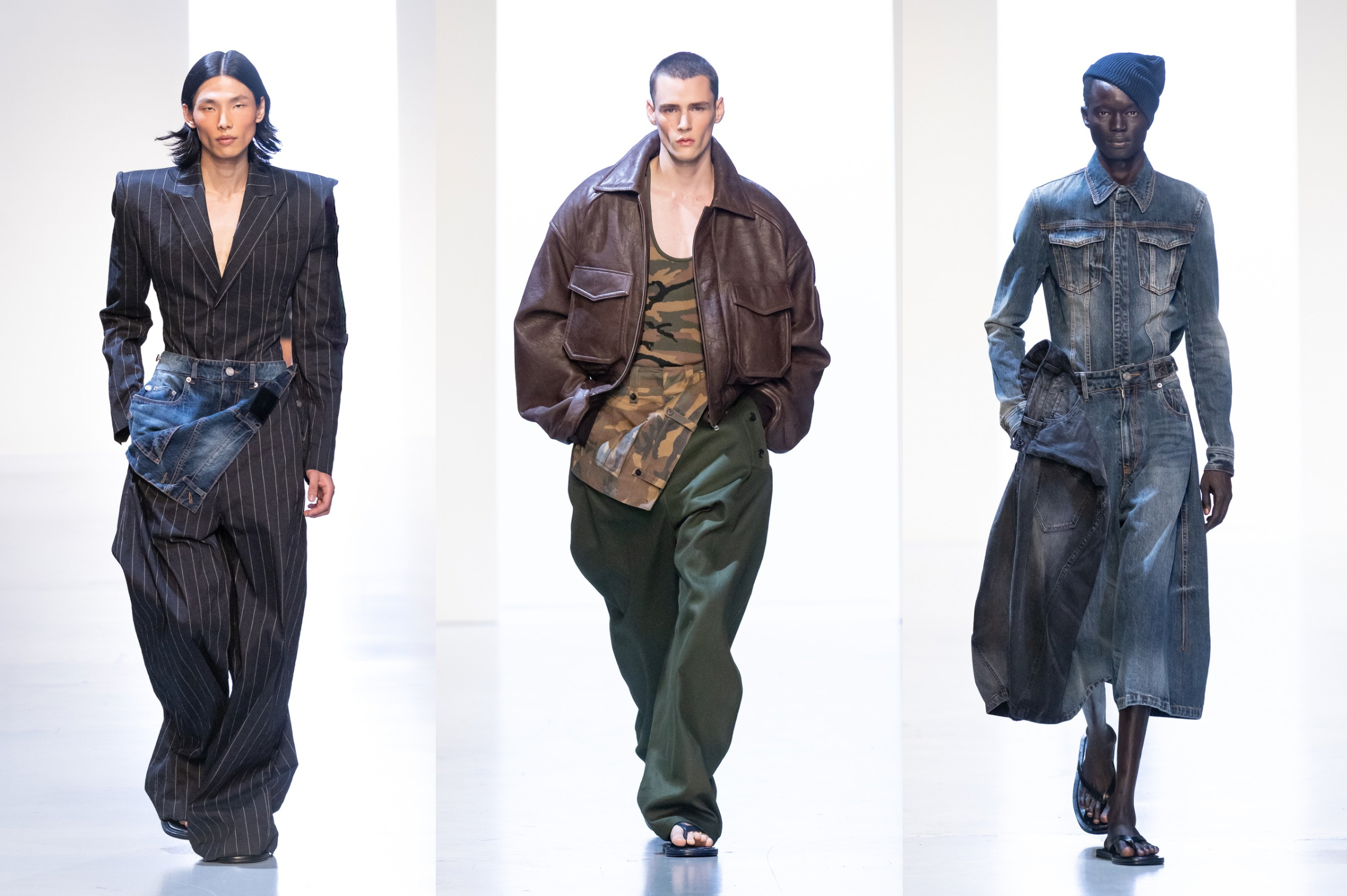
Bluemarble Transports Us to the Mountains
For Spring/Summer 2026 Blumarble transported attendees from the urban bustle to the serene, yet rugged, landscapes of the mountains. Creative director Anthony Alvarez Graff drew deep personal inspiration from his teenage years spent hiking Mont Faron in Toulon, France, resulting in a collection that beautifully balanced technical practicality with a vibrant, free-spirited aesthetic.
The show’s setting itself was a direct evocation of its theme: the runway was scattered with moss, bark, and loose shrubbery, creating the illusion of a forest floor in the heart of Paris. This immersive environment immediately set the tone for a collection designed for those “in search of freedom and escape,” as described by the brand.
At the core of SS26 was the concept of “the space between mountain and city,” a quiet tension that Alvarez Graff explored through contrasting fabrics and silhouettes. Technical weaves met softer textures, and structured cuts brushed against delicate florals. Relaxed, oversized pieces, including hoodies and ripped denim, were juxtaposed with tailored elements, creating a look that was both comfortable and intentionally refined. The collection pushed back against conventional citywear, embracing a more fearless, ready-for-anything attitude.
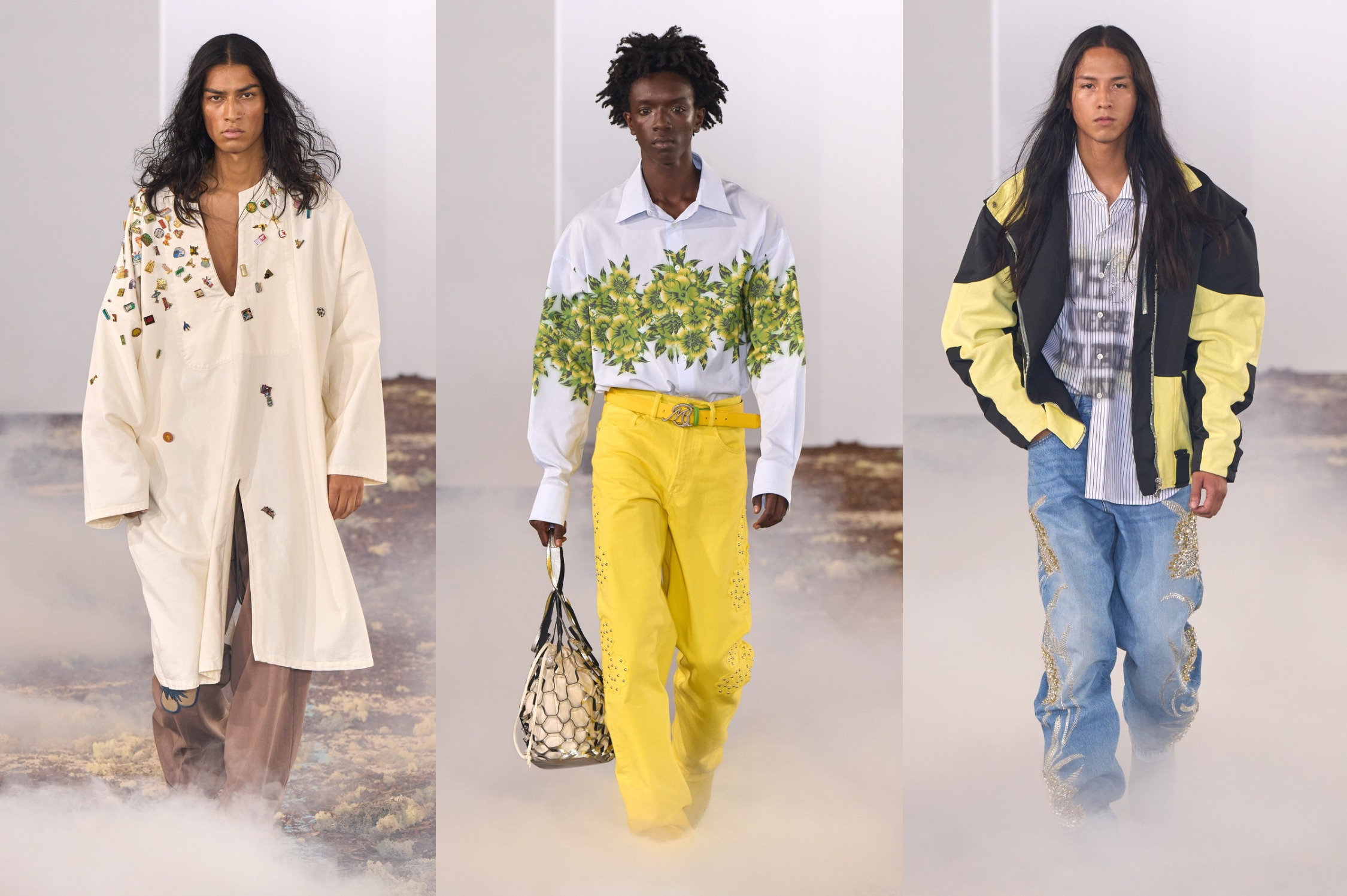
Willy Chavarria Makes a Statement
Willy Chavarria’s Spring/Summer 2026 collection, titled “Huron” – a poignant reference to his California hometown – resonated as a deeply personal and politically charged statement. More than just a show, it was a powerful act of bearing witness, blending compelling narratives of identity, resilience, and unapologetic truth with his distinctive design language.
The show opened with a breathtaking and solemn tribute: 35 men, clad in crisp white ACLU (American Civil Liberties Union) T-shirts, knelt in an almost reverent silence. This opening, a direct and heart-stopping reference to the thousands of Salvadoran immigrants detained and deported, immediately set a tone of urgency and reflection.
From this powerful start, the collection seamlessly wove Chavarria’s signature high-fashion tailoring with streetwear influences. Italian-made tailoring took centre stage, with relaxed yet refined “Chilango” blazers for men and sharply cinched, strong-shouldered “Nuevo Staple” blazers for women. These silhouettes, in a vibrant palette of “Chicle” pink, “Papaya” orange, “Red Hot,” “Bourdin” blue, and “Butter” yellow, felt like deliberate acts of empowerment, balancing softness with structural precision. The colours, unexpectedly joyful given the show’s sombre opening, were inspired by the uniforms of factory workers globally, offering a subversive take on belonging.
Leather was reimagined as a year-round essential, seen in “Bad Boy” pants, “Chuco” blazers, and trench-style dresses, crafted from premium Italian hides that spoke of timeless luxury. Fabrics like Inox-woven crinkled cotton lent texture and a lived-in spirit to many pieces. The collection also saw the debut of Chavarria’s complete accessories line, featuring rich Italian leather bags and clutches adorned with a signature ‘W’ strap, signalling a significant expansion for the brand. The third chapter of his highly anticipated collaboration with adidas Originals introduced new running models like the Megaride AG and Megaride AG XL, alongside a reinterpretation of the iconic Superstar with an unexpected rose toe.
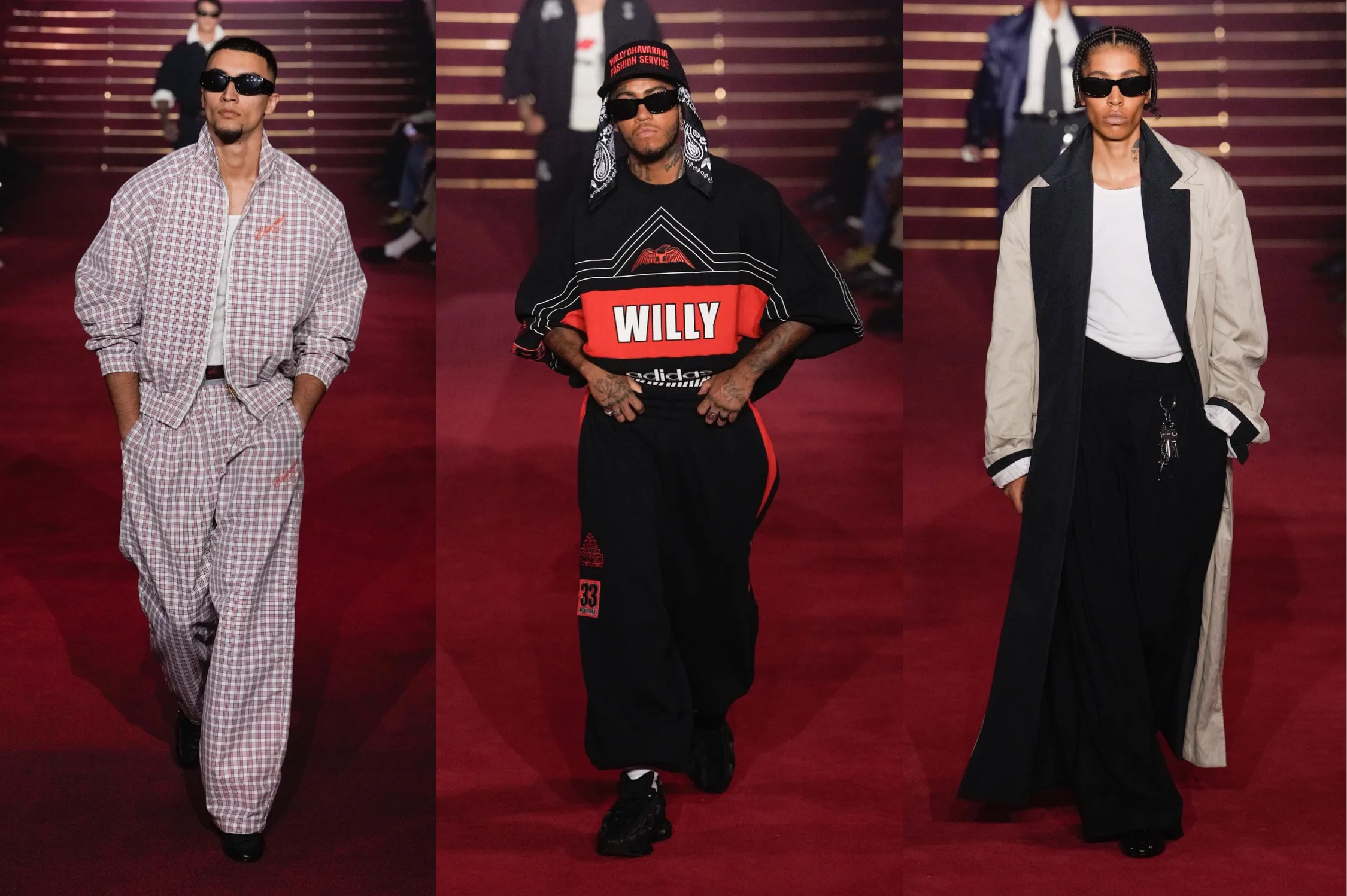
Acne Studios is Made for The Modern Man
For Spring/Summer 2026, Jonny Johansson and Acne Studios presented a menswear collection that celebrated the awkward, the unbothered, and the beautifully “mid-transition.” Moving away from last season’s pursuit of sartorial perfection, SS26 embraced an “intuitive way of dressing,” offering a sharper, yet deliberately imperfect, ensemble for the contemporary man.
The collection delved into the ongoing study of masculinity, where sharp sportswear gestures collided with nostalgic and academic influences. It was as if garments had been passed down through generations, creating an eclectic mix that prioritised spontaneity over pristine exactitude. As Johansson himself noted, the collection embodies “a geeky, quietly confident attitude that beats perfection by far. Our character is cool and unbothered – that’s where his charisma comes from”.
Silhouettes played with deliberate disproportions: fitted shirts extending past the hip, vintage-cut jeans reappearing in a boot-legged and boxy form reminiscent of jogging bottoms, and abbreviated shorts. Things felt intentionally “off” – too tight, too long, too short – but always in a way that contributed to the collection’s unique charm.
A strong 1970s influence permeated the collection, evident in elongated collars on narrow shirting, flourishes of silk, and the new slim-cut “1979” jeans. This retro sensibility was paired with elements from more recent decades, including the reintroduction of the “2010” straight-leg, low-waist jeans in a “mended” iteration.

ASAP Rocky Gave us Obligatory Fashion
A$AP Rocky’s AWGE returned to Paris Fashion Week for SS26 with “Obligatory Fashion,” a provocative show that critiquee societal norms and the transformation of “ghetto” styles into luxury.
The show was set in a neo-Gothic United Protestant Church which was transformed into a makeshift courtroom, complete with metal detectors lining the runway. This direct homage to Rocky’s recent legal experiences instantly immersed the audience in a narrative of scrutiny and self-expression, intensified by chopped-and-screwed tracks and new music from his upcoming album, Don’t Be Dumb.
“Obligatory Fashion” blurred lines between the foundational and avant-garde, exploring how necessity drives trends and transforms once-stigmatised attire into cultural iconography. Models, some seemingly caught mid-transition with hair rollers and painted black eyes, moved with unbothered confidence.
Each look dramatically reinterpreted uniforms and everyday wear. The collection featured exaggerated proportions through oversized shirts and slacks, vast denim gaucho pants, and check shirts morphing into dresses. Judge-like robes became blown-up bomber jackets. Tuxedo shirts and waistcoats paired unexpectedly with denim and silk scarves, while cargo shorts gained dramatic volume. Plaid skirts wrapped over “NOT GUILTY” basketball jerseys, accessorised with clear-frame sunglasses, making explicit and implicit statements.
Accessories were key to the narrative. Models wore Rocky’s new PUMA sneakers, including the Mostro Gabbia, a distressed PUMA Speedcat and playful details like 40oz bottles with flowers and diamond-encrusted Ray-Bans. Clutch bags resembling document folders completed “lawyer” looks, while rhinestone nameplate belts and AWGE-branded faux fur totes solidified the distinct visual language.
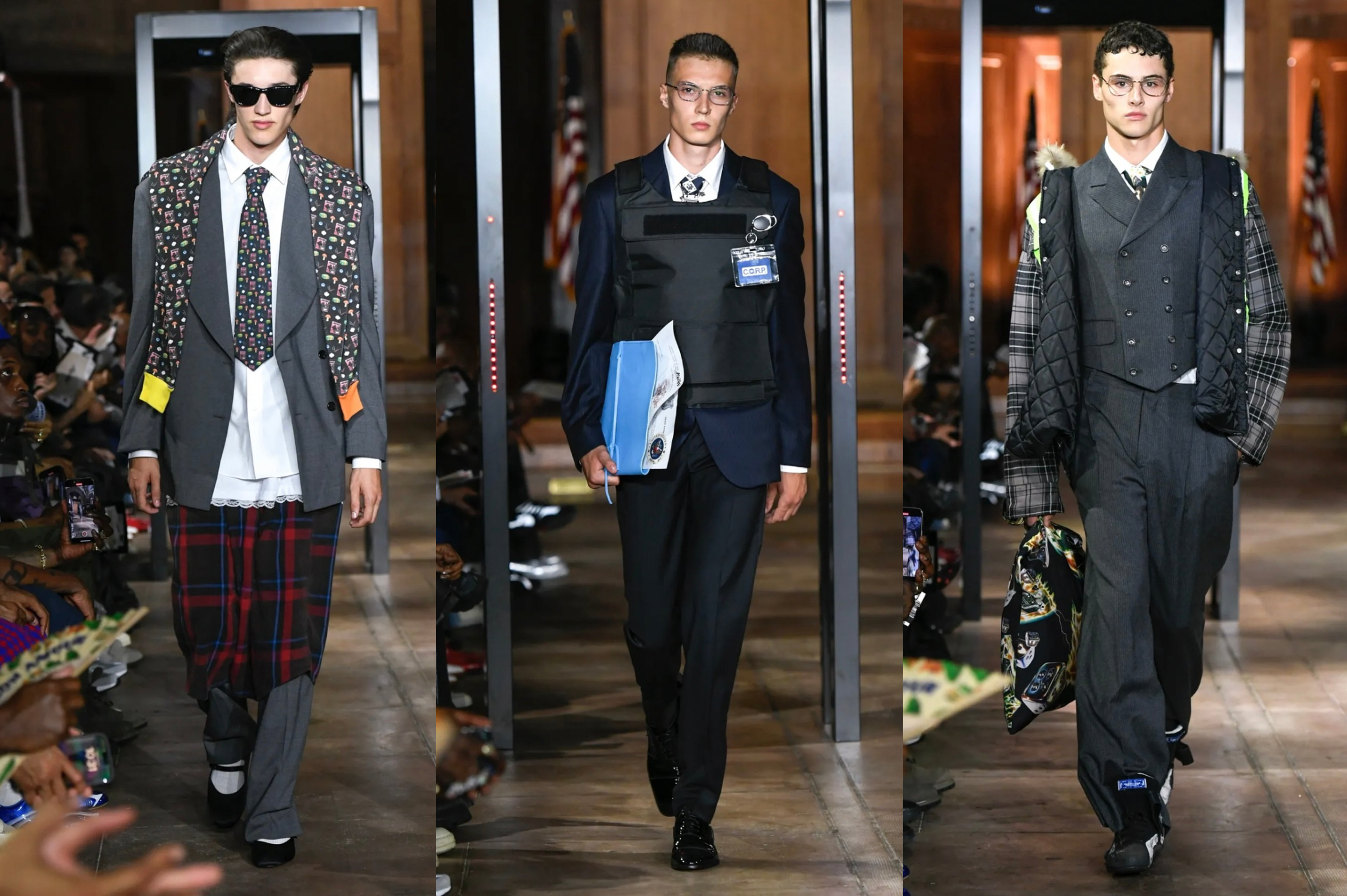
Dries Van Noten Redfined Modern Menswear
The Dries Van Noten Spring/Summer 2026 menswear collection, titled “Just a Perfect Day,” marked the highly anticipated solo menswear debut of Julian Klausner, who assumed the role of creative director following Dries Van Noten’s retirement. Staged in a stark, concrete garage and set to the evocative strains of Lou Reed, the collection felt like both a respectful tribute to the brand’s heritage and a vibrant, uninhibited leap into a playful future.
Klausner, who previously oversaw Dries Van Noten’s womenswear alongside Van Noten himself, showed an innate understanding of house codes, infusing them with liberation and spontaneity. The collection explored the tension between formality and casualness, envisioning a Dries Van Noten man post-party, effortlessly chic at dawn on the beach.
Signature Dries Van Noten elements were present but re-energised. Bold florals, layered stripes, and flowing silk sarongs made appearances, often elevated with unexpected ease. High-waisted cycling shorts were daringly paired with shimmering cummerbunds, which themselves became a playful focal point, appearing in various fabrics, stripes, and intricate embroideries. Boxy tailoring was softened by fluid silks, while sequin-sprinkled bombers winked at eveningwear without ever feeling overly formal.
The colour palette was a confident celebration of contrasts, featuring dramatic clashing reds, acid pinks, jade greens, saturated oranges, and mauves, grounded by black, white, khaki, and a balancing grey mélange. Accessories included black or reddish leather dress shoes with sporty laces (some croc-stamped). The popular DVN sneaker returned in new fabrics like red suede and pastel satin, plus sleek monochromatic options. Jewellery resembled beach charms or talismans, made from sustainably sourced shells with gold wire. Bags featured the compact “Arch” and an elongated DVN sneaker-inspired duffel, both carried with soft ease.
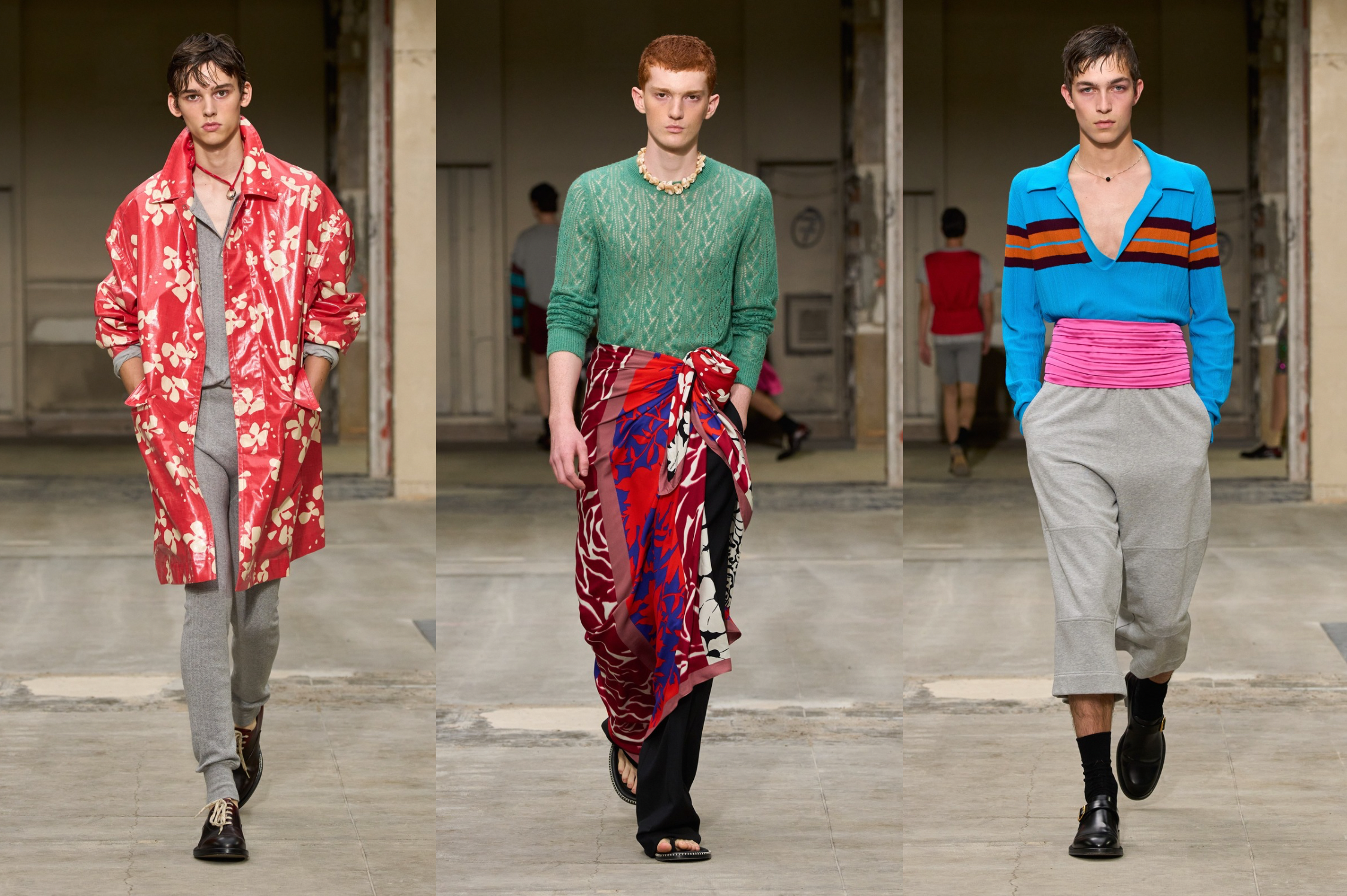
Amiri was All Opulence
Mike Amiri transported his audience to an imagined world for the Spring/Summer 2026 collection, titled “Chateau AMIRI.” This conceptual hotel, blending cinematic glamour, artistic spirit, and cultural convergence, served as the backdrop for a collection that transitioned from last season’s high-octane “Club AMIRI” nightlife to a softer, brighter “morning after.” The show, held at Le Carreau du Temple, was transformed into a lush, sun-drenched courtyard complete with bubbling fountains, immersing attendees in the collection’s relaxed opulence.
The collection masterfully blended loungewear and refined tailoring, capturing hotel luxury and intimacy. Monogrammed robes, soft slippers, and tassels nodded to grand traditions, while silhouettes exuded Riviera elegance, envisioning diverse individuals effortlessly sharing Los Angelean cool. Artist Wes Lang was a key inspiration for the collection, his bird motifs—originally from hotel stationery—appearing as exquisite embroidery and jacquard. These fluttering birds, with botanical beading, created a poetic dialogue, elevating the collection’s narrative and weaving a story into the designs.
Styling perfectly conveyed dressed-up ease. Silk smoking jackets, feather embellishments, and ruffled tuxedo shirts offered sophisticated relaxation. Languid, soft-shouldered, half-lined tailoring provided fluidity, embodying a Californian-international nonchalance. Luxurious pajamas and robes, re-evaluated in figured silks and embroideries, seamlessly blended with relaxed summer tailoring. Womenswear, an expanding focus for AMIRI, also saw enhanced elegance. The collection featured flowing open-knit gowns, jewel-toned silk tailoring, and delicate lace inserts that hinted at lingerie, all exuding the opulence characteristic of the brand’s California ethos.
Accessories reinforced the hotel-inspired theme. The newly introduced “Honey” bag, in crocodile-embossed suede and soft leather, offered a relaxed, slouchy shape. Slipper-inspired moccasins completed the loungewear-meets-luxury aesthetic, while subtle key necklaces and tassel key fobs further integrated the lore of hotel life into the wearable pieces.
